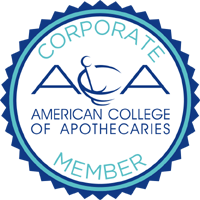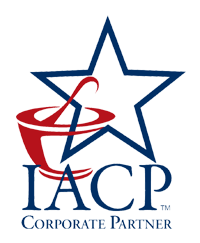
When it comes to the health of your customers, there’s no detail too small. And while the molds you use to compound your prescriptions might seem like one of those “small details,” it’s actually quite significant. Because in the end, it all boils down to the “cookware” when you want to create any perfect mixture. That’s why at BIOSRX, we value the feedback of compounding pharmacists, and for that reason we provide silicone and thermoplastic elastomer (TPE) molds to pharmacies for compounding troches and rapid dissolve tablet prescriptions. While other compounding wholesalers might provide Teflon® molds to compounding pharmacies, where they fill individual cavities within the mold to make troches, the safety and efficiency of silicone or TPEs is a much better choice in the long-run, both for the well-being of the body and the environment. Not to mention the pharmacist’s peace of mind during the uniform compounding process provided by these specific molds that Teflon® simply can’t match.
Although Teflon® is a brand name that has been in wide use since the 1940s for everything from pots and pans to pet toys coated with the material, the potential danger of the man-made chemicals of which the material is composed (including C8 and fluorotelomers) is no secret. And, incidentally, it can have counteracting effects on the intended health benefit of compounded medicine with its proneness for weakening the immune system. The fluorochemicals in Teflon® are also known to have adverse consequences on the liver and spleen, as well as increasing cholesterol and triglycerides levels. That’s why silicone and TPE molds provide a less health hazardous alternative to the standard Teflon® choice that many pharmacists still think is the only option for their business. While manufacturers count on the carcinogenic chemicals present in Teflon® being “dispersed” during production, small trace amounts are often capable of remaining despite the recent major overhaul of the Teflon® industry after 2015. And this was only grudgingly implemented in the wake of decades-long litigation started by Robert Billot (as immortalized in the 2019 film Dark Waters).
In spite of their best attempts, the replacement materials for the PFOAs, called GenX chemicals, have also revealed the same problems with its toxicity and carcinogenic levels. Thus, in essence, Teflon® manufacturers have swapped out one precarious chemical for another. When overheated, these chemicals can be activated to commingle with whatever they’re being used to contain. In the pharmacist’s case, medicinal compounds.
While C8 and other chemical traces can stay in the body for extremely long periods of time, silicone molds are made of an organic compound structure that make them safer and more natural (as far as man-made materials go). They’re also very resistant to temperatures on the high and low end of the thermometer, as well as hypoallergenic--another great plus for your customer’s health and well-being. Generally silicone is heat resistant up to 302 degrees and TPE is heat resistant up to 250 degrees. However, silicone and TPE molds are extremely flexible and durable, with a soft, rubbery feel that makes the molds shock-absorbing and easily able to weather chemical resistance. Because of this unique advantage, silicone and TPE molds can be placed at just about any temperature without risk of ruining or damaging them. In contrast, temperatures for baking when using Teflon® are not able to go up as high (with a maximum threshold of about four hundred degrees). Depending on what the specific medication is, this can be rather limiting. Plus, who wants to add this additional concern into the mix (literally) when there are so many other important aspects to worry about? Most especially, ensuring a precise measurement so that your customer gets the correct recommended dosage prescribed by their doctor. This, of course, if of the utmost importance, most markedly for those requesting thyroid medication that can have a life-threatening effect if the dose or contents are in any way faulty.
And let’s not underestimate the worth of silicone and TPE flexibility. Unlike Teflon®, both these materials’ pliancy make for a trouble-free process in the lab. Many are already well-aware of silicone’s malleable ways, but for those wondering what the specific pliability of thermoplastic elastomers are, bear in mind that they can be stretched again and again to a size at least twice their original shape (at room temperature). Even better, they can return to their normal form when the tightening pressure is taken off. How’s that for “being flexible”?
But making the switch to Teflon® is about more than just your pharmacy’s convenience. In addition, there are the environmental factors to consider. With the aforementioned ability of C8 and GenX chemicals in Teflon® to linger in our bodies, so, too, can they linger in the environment, polluting Mother Nature with often irrevocable ramifications. The “disposal” of Teflon® (despite never really being disposed of) often results in its contaminants ending up in the water supply via groundwater. The dissemination of polyfluoroalkyl substances (PFAS) into our water is a source of alarm even today, as greater attempts are made to stamp out use of “pure” Teflon® altogether. Its tendency to “stick around” is no different when taking into account the contact it makes with your product during the baking process. And that’s certainly not something your customer wants to take a chance on, especially if given the choice between Teflon® or these two appreciable alternatives.
Another benefit is that silicone and TPE molds are recyclable and break down more easily in our habitat. What’s more, because of PFAS’ propensity for contamination, there’s always an unwanted chance that Teflon® could end up in the final product itself. And, due to the sensitivity of many of the compounds we work with in our industry, no one should want to take that risk on Teflon® infecting the troche. And now, because of what BIOSRX can offer, there’s simply no need to take such a chance on any kind of impurity in your molds.
Thorough and meticulous in terms of application process, the BIOSRX molds available for purchase were created with productivity in mind. While waiting for one set of troches to settle, you can get started on your next, streamlined into a smooth and continuous operation for your lab. The possibility of filling three hundred troches in approximately ninety seconds in an error-free manner should give you some indication of just how life-changing this device can be. Compounding a maximum amount in a minimum of time means your small compounding pharmacy can take itself to the next level and really flourish to meet even greater supply demands. This, in turn, means being able to better compete with other major pharmacies in your area by potentially drawing in a greater number of customers to your location.
The customer, as well, stands to profit from the innovation of this simple alteration in the “standard-issue” material of Teflon® that pharmacists have grown all too accustomed to. The customer will first and foremostly see an immediate difference with regard to how easy it is for them to remove their lozenges from the troche mold. This is a direct result of the materials the troches are composed of. The nonstick properties of thermoplastic and silicone, indeed, put Teflon® to shame, especially when taking into account that this is supposed to be its primary claim to fame. Well, not anymore.
The tailored use that these types of troches are designed to accommodate (e.g. progesterone, sildenafil, testosterone and many other common active pharmaceutical ingredients [APIs]) also help to increase patient compliance. This is, in part, thanks to faster melting, as well as the shape and size of the form. Here, too, Teflon®’s lack of flexibility is rather noticeable as a drawback to the ease and efficacy of baking your customer’s prescription with even, unchallenging precision. To boot, the molds offer different cavity sizes (ranging from sixty to five hundred cavities per mold) ideal for compatibility with just about any laboratory setup. Whatever the amount you need filled (no matter how large or small), these troches get the job done--and quickly.
The versatility of our silicone and TPE mold options are notably useful in the effortless creation of suppositories, to boot--which, let’s be honest, have been notoriously difficult to work with as they can be quite leaky and therefore cause an unavoidable mess that can negatively impact the customer’s user experience. This usually occurs when they try to remove the suppositories from the outmoded molds. Suppository molds are typically made of polytetrafluoroethylene (PTFEs) coating (a.k.a. Teflon®), adding to the time-consumption and difficult-to-maneuver aspects of the process. Compounding pharmacists are faced with unique impediments with regard to removing suppositories from their trays, so often clunky--therefore allowing more opportunity to bungle the job. Even when they’re peel-away plastic shells, the unwieldiness of the medium makes for an unpleasant system on both ends (no pun intended) of the user experience. Filling the cavities of the mold with the same pour and disperse technique our other troche trays provide, suppositories just got a lot more manageable. The molds available to your pharmacy also come in options of Entry, Standard or Advanced Packages for an array of formula choices and permutations.
Thanks to the same semi-flexible material that flattens the PTFE-based competition, the mold makes it a cinch to twist and turn without resistance so that the suppositories will easily (and intactly) fall out of the cavities. The smooth surface (nonstick, of course) further aids in this unhampered ejection. Better still, the customer gets the best possible version of the product for optimal comfort level when using it. This includes faster absorption into their system, which means the desired effect will take hold faster, too. The perks extend to your pharmacy as well, for it opens up the possibility of increasing the suppository element of your business with more mold sizes to choose from and faster production times. You’ll also use less suppository base than you would for the large suppository sizes of PTFE molds--another cost-cutting, resource-conserving reward that doesn’t come with Teflon®.
As for our non-suppository molds, it’s worth pointing out that the troches in our specialized selection are smaller than your average cavity (while still able to fit the varying API strengths required). This means the troches dissolve more quickly, which is also boosted by its triple-score design. Additionally, the latter feature makes it even more undemanding to measure out dosages in an infallible fashion. A convenient run-off trough integrated with the mold collects any excess material that might result from the compounding procedure. Teflon® molds, in general, do not offer this incorporated trough to aid in making cleanup less cumbersome. What’s more, everything about these types of molds aims to cut down on waste, both of time and resources that are evermore valuable in the current landscape.
In point of fact, there are many aspects of the standard Teflon® mold that will make you feel trapped in the past once you make the switch to silicone or TPEs. For example, the array of additional accoutrements associated with Teflon® cavity plates will come across as entirely superfluous after sampling from the BIOSRX oeuvre. While the trappings of Teflon® molds can range from differing orienter styles to funnels to ointment mills, you’ll soon feel liberated by the no frills stylings of the BIOSRX molds we can provide for your compounding pharmacy.
Another drawback where Teflon® is concerned is the lack of variety in terms of millimeters that the plates can hold. This makes for a confining and limiting hindrance. For the most part, the cavity volume of Teflon® molds is one milliliter. Our BIOSRX ones provide a range of depths including 0.25, 0.5 and one milliliter for the enhancement of accuracy in administering a dosage. The previously mentioned flexibility of the material further signals not being hemmed in by the hardness issue of Teflon®, finitely restricted by its staunch height and diameter measurements. You’ll even help eliminate waste--which goes back to the environmental consciousness of this product--by getting rid of the need to reorder single-use molds.
Because customized medicine should be just that, BIOSRX molds are also extremely accommodating toward what bases they can be used with. This is in part because of the reduced hypersensitivity of the materials the frames are crafted of in comparison to Teflon®. Some of the troche bases the molds are compatible with include PEG bases, fatty acid bases and gelatin or suppository bases. Here again, Teflon® doesn’t quite make the grade, as it can’t be used with a gelatin base (often necessary for creating pet treats).
Mixing specialized ingredients designed to suit and address the health concerns of your customer is an important responsibility. Their reliance on a medicinal alternative is built on a sense of trust in the product. At the root of that trust is an unspoken faith in the pharmacist to precisely mix multiple active ingredients together at a specified amount. This task already puts enough pressure on the average compounding pharmacist to ensure accuracy. Teflon® molds can greatly add to that pressure because of the individual filling required of each troche. A slip of the hand or a trick of the eye, and the wrong amount can go in. Thanks to these innovative molds, your margin of error is vastly reduced when you pour and disperse your melted compound mixture onto the mold. Equally distributing the tincture with your applicator, you’ll create easily and evenly-formed troches without any doubt as to whether the sizes of each one are perfectly spread.
Convenience knows no bounds with the distinctive molds we offer. Especially since use of silicone and TPE is also greatly beneficial to the pharmacy’s staff, which is not required to fill each troche individually, but as many at a time as needed--truly a game changer for efficiency. Not only that, but, because of the way the molds are constructed, your pharmacists will be able to pour and disperse for even distribution so that each mold is the same size and shape without risk of human error (as we all can’t help but fall prey to now and again). With Teflon®, that option doesn’t exist, and you’re often left with slightly unequal sizes due to the individual filling of the troches.
The versatile molds can meet the demands of a wide array of requests, whether it’s a patient with unique compounding needs or a refill of some of the pharmacy’s most commonly requested prescriptions. For an added bonus that will bring a smile to your customer’s face, the gel-based molds are ideal for making pet medications and treats as well. Because a pharmacy’s four-legged customers are becoming just as important to the industry of late.
What’s more, the primary benefit so often touted about Teflon®--its non stick properties--is present in silicone and TPE molds as well. Because a nonstick coating is also manufactured into these forms of troches, they’re smooth enough to easily release when the compounds have been fully cooled and allowed enough time to form. Unlike Teflon®, these molds have also cultivated a reputation for the shortest amount of time to reach completion--all just another part of why this process is a major asset for time management. Not to mention a boon to being able to compete with larger compounding pharmacies.
Even the cleaning method is less cumbersome and limiting than it is for Teflon® molds, which aren’t always dishwasher-safe or chemical-resistant with certain cleaning solutions. Whereas these must be treated “gently” because of their predisposition to more easily get scratched or ruined, silicone and TPE molds can be cleaned by simply running hot water over them or placing them in the top rack of the dishwasher at the lab.
With the addition of time on your side comes more opportunity to use your resources elsewhere. One of the most valuable benefits to you is the cost-effectiveness of these molds. Because you’re able to compound much more rapidly thanks to the way we’ve revolutionized troche fulfillment (now at least ten times faster than individually made ones), you’re saving time and money. This can even come into play in terms of how much easier it will be to train new compounding pharmacists in the art. And don’t forget that the more foolproof the process, the less likely the pharmacy can be accused of being liable for any potential errors. Talking of limiting liability, these troches make it possible to package the prescription in a child-resistant Rx vial for added patient assurance. These cost-effective results go right back to the customer because pharmacies can, in turn, help by providing better prices to their consumers. And it’s all part of giving back to the community you rely on for business, just as they rely on you for your service. A perfect synergy of symbiosis.
Ensuring the health and well-being of your clients at every turn starts from the ground up. Or rather, from the mold up. Take, for instance, thyroid medication. It’s all too common at any pharmacy, and is also better off in a mold that doesn’t involve intermixing with a chemical like Teflon®. The sensitivity of T4 and T3 capsules mean that a customer’s life can be on the line when something goes wrong in the compounding process. The narrow therapeutic index of T4 in particular leaves a small window in terms of how much the dose can vary in milligram amount from the prescription. In this way, our molds provide a greater accuracy that can mean the difference between a life or death situation, with heart failure being one potential ramification of a miscalculated dosage. In other words, not uniformly mixing T3 or T4 into the troche. Again, the benefits of this uniformity in silicone and TPE troches aren’t just a help to the pharmacists doing the baking, but very much the customers as well--particularly if you’re dealing with those who suffer from thyroid issues.
Because of how durable these molds are, you can count on them to last and remain confident in your reusage of them. Built to withstand heat and other general wear-and-tear that might cause damage or deformities on a Teflon® plate, these molds don’t necessitate any use of such harmful materials as PVC, latex, lead or cadmium (which many synthetic products do). So what are you waiting for? Make the switch to silicone and TPE today.












